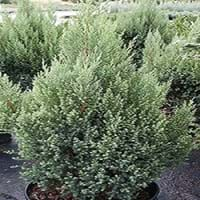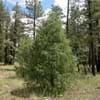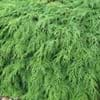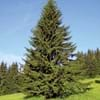Life Span
Perennial
Annual
Type
Needled or Scaled Evergreen
Needled or Scaled Evergreen
Origin
North America
China, Japan
Types
Not available
Juniperus Communis, Juniperus brevifolia, Juniperus brevifolia
Habitat
Deciduous forests, Rocky areas, rocky outcrops
Sandy areas, Well Drained
USDA Hardiness Zone
3-7
3-9
Sunset Zone
1a, 1b, 2a, 2b, 3a, 3b, 4, 5, 6, 7, 8, 9, 10, 11, 12, 13, 14, 15, 16, 17, 18, 19, 20, 21, 22, 23, 24
1a, 1b, 2a, 2b, 3a, 3b, 4, 5, 6, 7, 8, 9, 10, 11, 12, 13, 14, 15, 16, 17, 18, 19, 20, 21, 22, 23, 24
Habit
Narrow Upright/Fastigiate
Pyramidal
Flower Color
Not Available
Not Available
Flower Color Modifier
Bicolor
Bicolor
Fruit Color
Not Available
Not Available
Leaf Color in Spring
Blue Green
Green, Blue Green, Gray Green
Leaf Color in Summer
Not Available
Green, Blue Green, Gray Green
Leaf Color in Fall
Blue Green
Green, Blue Green, Gray Green
Leaf Color in Winter
Blue Green
Green, Blue Green, Gray Green
Leaf Shape
Scale-like imbricate
Needle like
Plant Season
Spring, Summer, Fall, Winter
Spring, Summer, Fall, Winter
Sunlight
Full Sun, Partial Sun
Full Sun
Type of Soil
Clay, Loam
Loam, Sand
The pH of Soil
Acidic, Neutral, Alkaline
Acidic, Neutral, Alkaline
Soil Drainage
Well drained
Well drained
Bloom Time
Early Spring, Late Winter, Mid Spring
Not Available
Tolerances
Drought
Drought
Where to Plant?
Container, Ground, Pot
Container, Ground, Pot
How to Plant?
Cuttings, Seedlings
Rooted stem cutting
Plant Maintenance
Medium
Medium
Watering Requirements
Does not require water in summer, Keep the Soil well drained, Medium
Needs very little water
In Summer
Lots of watering
Lots of watering
In Spring
Moderate
Moderate
In Winter
Average Water
Average Water
Soil pH
Acidic, Neutral, Alkaline
Acidic, Neutral, Alkaline
Soil Type
Clay, Loam
Loam, Sand
Soil Drainage Capacity
Well drained
Well drained
Sun Exposure
Full Sun, Partial Sun
Full Sun
Pruning
Remove damaged leaves, Remove dead branches, Remove dead leaves
Prune back the growing tips, Prune if you want to improve plant shape, Remove damaged leaves, Remove dead branches, Remove dead leaves
Fertilizers
All-Purpose Liquid Fertilizer
All-Purpose Liquid Fertilizer, Apply 10-10-10 amount
Pests and Diseases
Red blotch
Red blotch
Plant Tolerance
Drought
Drought
Flowers
Insignificant
Not Available
Flower Petal Number
Single
Single
Foliage Texture
Medium
Medium
Foliage Sheen
Matte
Glossy
Attracts
Flying insects, Hummingbirds
Wildlife
Allergy
Not Available
Headache, Itchiness, Pain and fatigue, Pollen, Rhinitis, wheezing
Aesthetic Uses
Bonsai, Hanging Basket, Showy Purposes, Used for decorating walls, fences, gates, hedges, etc.
Borders, Showy Purposes
Beauty Benefits
Not Available
Not Available
Environmental Uses
Air purification
Air purification
Medicinal Uses
Appetizer, Diaphoretic, Disinfectant, Diuretic, Hemostatic, Laxative, Sedative, Tonic
Antibacterial, Arthritis, Eczema, Psoriasis, Rheumatism, Snakebite
Part of Plant Used
Fruits, Leaves, Shoots
Not Available
Other Uses
Air freshner, Pesticide, Repellent, Shelterbelt, Showy Purposes, Wax, Wood is used in construction
Used as essential oil
Used As Indoor Plant
No
No
Used As Outdoor Plant
Yes
Yes
Garden Design
Container, Edging, Feature Plant, Foundation, Groundcover, Hedges, Mixed Border, Topiary, Bonsai, Espalier
Feature Plant, Foundation, Hedges, Mixed Border, Screening, Wind Break, Topiary, Bonsai, Espalier
Botanical Name
JUNIPERUS scopulorum 'Skyrocket'
JUNIPERUS chinensis 'Blue Point'
Common Name
Skyrocket Juniper
Blue point juniper
In Hindi
skyrocket juniper
Blue point juniper tree
In German
die Höhe schnellen Wacholder
Blauer Punkt Wacholder
In French
monter en flèche genévrier
Point bleu genévrier
In Spanish
dispararse enebro
enebro punto azul
In Greek
ανεβάσει στα ύψη αρκεύθου
δέντρο αρκεύθου μπλε σημείο
In Portuguese
foguete zimbro
zimbro do ponto azul
In Polish
jałowiec Skyrocket
Niebieski punkt drzewa jałowca
In Latin
skyrocket iuniperorum
Blue Point juniperi:
Phylum
Pinophyta
Pinophyta
Class
Pinopsida
Pinopsida
Family
Cupressaceae
Cupressaceae
Genus
Juniperus
Juniperus
Clade
Not Available
Not Available
Tribe
Not Available
Not Available
Subfamily
Cupressoideae
Not Applicable
Importance of Skyrocket Juniper and Blue Point Juniper
Want to have the most appropriate plant for your garden? You might want to know the importance of Skyrocket Juniper and Blue Point Juniper. Basically, these two plants vary in many aspects. Compare Skyrocket Juniper and Blue Point Juniper as they differ in many characteristics such as their life, care, benefits, facts, etc. Every gardener must at least have the slightest clue about the plants he wants to plant in his garden. Compare their benefits, which differ in many ways like facts and uses. The medicinal use of Skyrocket Juniper is Appetizer, Diaphoretic, Disinfectant, Diuretic, Hemostatic, Laxative, Sedative and Tonic whereas of Blue Point Juniper is Antibacterial, Arthritis, Eczema, Psoriasis, Rheumatism and Snakebite. Skyrocket Juniper has beauty benefits as follows: Not Available while Blue Point Juniper has beauty benefits as follows: Not Available.
Compare Facts of Skyrocket Juniper vs Blue Point Juniper
How to choose the best garden plant for your garden depending upon its facts? Here garden plant comparison will help you to solve this query. Compare the facts of Skyrocket Juniper vs Blue Point Juniper and know which one to choose. As garden plants have benefits and other uses, allergy is also a major drawback of plants for some people. Allergic reactions of Skyrocket Juniper are Not Available whereas of Blue Point Juniper have Headache, Itchiness, Pain and fatigue, Pollen, Rhinitis and wheezing respectively. Having a fruit bearing plant in your garden can be a plus point of your garden. Skyrocket Juniper has no showy fruits and Blue Point Juniper has no showy fruits. Also Skyrocket Juniper is not flowering and Blue Point Juniper is not flowering . You can compare Skyrocket Juniper and Blue Point Juniper facts and facts of other plants too.





